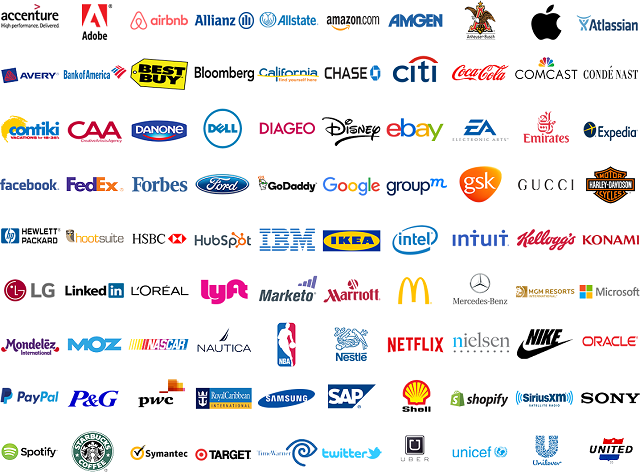Unlock the Power of SEO: Boost Your Online Visibility
In today’s digital world, having a strong online presence is key for businesses to thrive. Search engine optimization (SEO) is essential for boosting your online visibility. It helps drive more organic traffic to your site.
Learning the basics of digital marketing and SEO can help your website rank better on search engines. This means more chances of being found by potential customers.
This boost in visibility can lead to more brand awareness, leads, and sales. It’s a win-win for your business.
Key Takeaways
- SEO is crucial for businesses to establish a strong online presence.
- Understanding digital marketing and SEO can improve website ranking.
- Increased online visibility can lead to more leads and sales.
- Businesses can benefit from optimizing their website for search engines.
- A strong online presence is vital for businesses to succeed.
What is SEO and Why It Matters
SEO, or search engine optimization, is key in digital marketing. It helps businesses get seen online. By making their website search engine friendly, they can get more visitors and possibly more sales.
Definition of SEO
SEO means making a website better for search engines. This way, it shows up higher in search results for certain words or phrases. It uses keyword research, on-page optimization, and link building. A HubSpot study found that 75% of users don’t look past the first page of search results. This shows how important a high ranking is.
Importance of SEO for Businesses
SEO is very important for businesses. A good SEO plan can:
- Increase online visibility
- Drive targeted traffic to the website
- Enhance brand credibility
- Improve conversion rates
- Provide a competitive edge in the market
By using SEO, businesses can stay ahead. It’s not just about search engines. It’s also about making the website better for users and giving them value.
Key Components of SEO
A good SEO strategy has three main parts: on-page SEO, off-page SEO, and technical SEO. Knowing these is key to making your website more visible and getting more organic traffic.
On-Page SEO
On-page SEO makes your website better for search engines. It means creating high-quality, keyword-rich content that your audience likes. A Moz study shows it’s a big part of SEO.
Also, work on your meta tags like title tags and meta descriptions. They should show what your content is about and make people want to click.
Don’t forget about header tags (H1, H2, H3, etc.) and internal linking. They help organize your content and make it easier for search engines to understand your site. Plus, make sure your site works well on mobile devices and loads quickly. This improves user experience and search rankings.
Off-Page SEO
Off-page SEO builds your website’s reputation by getting good backlinks from other sites. Use strategies like guest blogging and creating content people want to share. Also, use social media to your advantage.
Getting links from trusted sites is more important than getting lots of links. These links help search engines see your site as more authoritative.
Technical SEO
Technical SEO makes sure search engines can find and index your site. This means optimizing your site’s structure, making it fast, and making sure it works on mobile devices. It also includes using SSL certificates for security and structured data for search engines to understand your content.
A strong technical SEO plan can really help your site show up better in searches. A fast, secure site not only ranks better but also keeps users interested and engaged.
How Search Engines Work
Understanding how search engines work is key to search engine optimization. To optimize a website well, you need to know how search engines operate.
Crawling and Indexing
Search engines use complex algorithms to crawl and index websites. Crawling is when they find new and updated content on the web. They do this with web crawlers or spiders that follow links from one webpage to another.
After crawling, the content is indexed. This means organizing it in a huge database for quick search. The indexing process looks at the content, finds key elements like keywords, and stores it for fast retrieval.
Algorithms and Rankings
Once indexed, algorithms decide how relevant and quality the content is. These algorithms look at many things, like keyword use, user experience, and backlinks. They figure out the rankings of webpages on a search engine results page (SERP).
Google’s updates, like Panda and Penguin, have changed how websites are ranked. They focus on quality content and ethical SEO. Knowing these updates and their impact on search engine rankings is vital for a good SEO strategy.
By understanding search engines, from crawling and indexing to ranking algorithms, businesses can improve their online presence. This helps them reach their audience more effectively.
Keyword Research: The Foundation of SEO
The base of a strong SEO plan is keyword research. It finds the terms people use to find content. By knowing these keywords, companies can make content that meets their audience’s needs. This makes their website more visible on search engines.
Tools for Keyword Research
Many SEO tools help with keyword research. Ahrefs and SEMrush are favorites for their detailed features. They help find the right keywords, see what competitors are doing, and track how keywords rank.
These tools give insights into how often people search for something, how competitive it is, and related keywords. This helps businesses make smart choices for their SEO plans.
Long-Tail vs. Short-Tail Keywords
It’s key to know the difference between long-tail and short-tail keywords in keyword research. Short-tail keywords are short and general, with lots of searches but lots of competition too. Long-tail keywords are longer and more specific, with fewer searches but less competition.
Using long-tail keywords can help businesses reach specific parts of their audience. For example, a company selling outdoor gear might aim for “waterproof hiking boots for men” instead of just “hiking boots.”
By mixing short-tail and long-tail keywords in their SEO, businesses can get more online visibility. They can also attract more potential customers.
Crafting Quality Content for SEO
Quality content is key to a good SEO plan. It must be valuable to your audience and good for search engines. This is how you boost your online presence.
Importance of Original Content
Original content is vital for several reasons. It gives your readers something new and interesting. It also makes your brand seem more trustworthy.
Google likes original, high-quality content. This makes it a must-have for your SEO plan.
Some benefits of original content are:
- More reader engagement because of unique content
- Stronger brand credibility and authority
- Better search engine rankings because Google favors original content
Using Keywords Effectively
Keywords are important in SEO, but they must be used wisely. Effective keyword optimization means knowing what your audience searches for. Then, add the right keywords naturally into your content.
Here are some tips for using keywords well:
- Do thorough keyword research to find the right terms
- Use keywords in your content’s title, headings, and body, but don’t overdo it
- Make your meta tags, like the title tag and meta description, keyword-rich
By creating top-notch, original content and using keywords smartly, you can boost your SEO. This not only helps your search rankings but also makes your site more user-friendly. It can lead to more engagement and possibly more sales.
SEO Best Practices for Websites
SEO is key for websites wanting to rank higher in search engines. By following these practices, businesses can boost their online presence. This leads to more visitors to their websites.
Optimizing meta tags is a core SEO element. Meta tags give search engines important details about your webpage. They help understand your content’s relevance to search queries. This includes the title tag, meta description, and keyword tag.
Optimizing Meta Tags
To make meta tags work well, create a unique and descriptive title tag. It should match your webpage’s content. Your meta description should be engaging and short, to get people to click on your link from search results.
Even though the keyword tag is not as important as it used to be, it still helps. It lets you highlight your main keywords.
Image Optimization
Optimizing images is vital for on-page SEO. It helps your website show up more in image searches, bringing in more visitors. Use descriptive file names and alt tags with your target keywords. Also, compress images to make your pages load faster.
For example, name your image files something like “seo-best-practices-for-websites.jpg” instead of “image1.jpg.” Your alt tags should describe the image and include relevant keywords, like “SEO strategies for improving website ranking.”
Mobile Responsiveness
Most people use mobile devices to access the internet. Mobile responsiveness is essential for SEO. A responsive website looks good on all devices, providing a great user experience. This boosts user engagement and helps your site rank better, as search engines prefer mobile-friendly sites.
To make your website mobile-friendly, use responsive web design techniques. These adjust your site’s layout for different devices. Test your site on various devices to ensure it works well and make any needed changes.
Link Building Strategies
Link building is key to off-page SEO. It boosts a website’s authority and ranking. Getting backlinks from trusted sites increases credibility and search visibility.
Backlinks Explained
Backlinks, or incoming links, are votes of confidence. They show search engines that content is valuable. Quality backlinks from authoritative sites matter more than many low-quality ones.
The significance of backlinks lies in their ability to:
- Increase website authority
- Improve search engine rankings
- Drive referral traffic
Effective Link Building Techniques
Good link building mixes strategies for quality backlinks. Some effective methods include:
Guest Blogging: Writing for other sites in your field builds relationships and gets backlinks. Make sure your guest posts are informative and engaging.
Broken Link Building: Find broken links and offer a working link to your site. It’s a smart way to get backlinks.
Resource Pages: Create pages that link to top sites in your field. This encourages them to link back to you, building relationships and getting quality backlinks.
Using these strategies can boost off-page SEO. It improves website authority and drives more organic traffic.
Local SEO: Targeting Your Community
In today’s digital world, local SEO is key for businesses wanting to reach local customers. By making their online presence more visible for local searches, they can get more people to visit their stores.
Importance of Local SEO
Local SEO is essential for businesses focused on specific areas. It helps them show up in local search results, making it easier for people to find them. A good local SEO plan can bring more website visitors, higher sales, and better conversion rates.
Also, local SEO is cheaper than old-school ads. By focusing on local customers, businesses can save money and still see good returns on their investment.
Optimizing for Local Searches
To get better at local searches, businesses should start by claiming and optimizing their Google My Business listing. They should make sure their business info, like address and hours, is correct and up-to-date.
Using location-specific keywords on their website is also key. They should use these keywords in their titles, descriptions, and content to show up more in local searches.
Another smart move is to ask customers for online reviews. Good reviews can make a business look better and help them rank higher in local searches. Businesses can get more reviews by offering great service and making it easy for customers to leave feedback on their Google My Business listing or other sites.
By using these local SEO tips, businesses can get more online visibility, attract more local customers, and grow. It’s a continuous effort that needs regular checks and tweaks to stay competitive.
Measuring SEO Performance
Measuring SEO performance is key for businesses wanting to boost their online presence. They need to track important metrics and use the right tools to see how well their SEO strategies work.
Key Metrics to Track
Several metrics are vital for checking SEO performance. Organic traffic shows how many visitors come to a site through search engines. Watching keyword rankings helps see if a site is well-optimized for certain search terms.
Other key metrics include bounce rate and conversion rate. Bounce rate shows how many visitors leave without doing anything else. Conversion rate measures how many visitors do what you want them to. Tracking these metrics gives insights into how users behave and how well SEO is working.
Tools for Monitoring SEO Results
Many tools help keep an eye on SEO performance. Google Analytics is essential for tracking organic traffic, bounce rates, and conversion rates. It gives detailed insights into how users interact with a site and how well it performs.
SEO audit tools like Ahrefs, SEMrush, and Moz do deep dives into website performance, keyword rankings, and backlinks. They spot areas for improvement and suggest ways to better SEO strategies.
- Google Search Console for monitoring search engine rankings and impressions
- Ahrefs for backlink analysis and keyword research
- SEMrush for technical SEO audits and competitor analysis
By using these tools and tracking key metrics, businesses can make their SEO strategies better. This leads to more online visibility and more organic traffic to their sites.
Common SEO Mistakes to Avoid
To make your website more visible, it’s key to steer clear of common SEO errors. A smart SEO plan can boost your online presence. But, some mistakes can slow you down.
Knowing these common mistakes helps you create a better SEO strategy. Two big ones to dodge are keyword stuffing and not catering to mobile users.
Keyword Stuffing
Keyword stuffing means using too many keywords in your content. It makes your content hard to read and unnatural. Google frowns upon this, seeing it as spamming.
To sidestep this, aim for quality content that naturally includes your keywords. Mix up your keywords and phrases to keep your writing natural.
Ignoring Mobile Users
With more people using mobile devices, ignoring them can hurt your online success. Making sure your site is mobile-friendly is key. It affects both user experience and search rankings.
A site that works well on all devices offers a smooth experience. To improve for mobile, focus on page speed, navigation, and content layout.
By avoiding SEO errors like keyword stuffing and neglecting mobile users, you can boost your site’s visibility. This leads to more visitors and a better user experience.
The Future of SEO
SEO’s future is being shaped by several key trends, including the rise of voice search and more sophisticated algorithms. As technology continues to evolve, businesses must adapt their SEO strategies to stay ahead of the curve.
Emerging Trends
One of the most significant emerging trends in SEO is the increasing importance of voice search. More users are using virtual assistants like Siri, Google Assistant, and Alexa. Businesses need to optimize their content for voice queries.
This means using natural language and focusing on long-tail keywords that mimic how people speak.
Another trend is the growing emphasis on user experience. Search engines now prioritize websites that offer a seamless, intuitive experience. This includes fast loading speeds, mobile responsiveness, and easy navigation.
Voice Search and SEO
The rise of voice search is changing the SEO landscape in several ways. Firstly, it emphasizes the need for conversational keywords. Unlike traditional typed searches, voice searches are often phrased as questions or full sentences.
To optimize for voice search, consider the following strategies:
- Use long-tail keywords that reflect natural speech patterns.
- Focus on providing direct, concise answers to common questions.
- Ensure your website is mobile-friendly, as many voice searches occur on mobile devices.
By embracing these emerging trends and adapting to the changing SEO landscape, businesses can improve their online visibility. They can stay competitive in an increasingly digital marketplace.
Getting Started With Your SEO Strategy
Creating a solid SEO strategy is key for businesses to shine online. It starts with setting SEO goals that match your business aims. These goals might include more website visitors or more leads.
To reach these goals, you need a clear implementation plan. This plan should detail how to make your website better. It covers on-page, off-page, and technical SEO. This ensures your SEO work is both focused and effective.
Also, an ongoing SEO strategy is vital. Keep an eye on important metrics and tweak your plan as needed. This way, you can stay on course and meet your SEO targets. By taking these steps and crafting a thorough SEO strategy, businesses can boost their online presence and achieve lasting success.
FAQ
What is the primary goal of SEO?
SEO’s main goal is to make your website more visible online. It does this by improving your site’s ranking on search engines. This brings more people to your site without paid ads.
How does on-page SEO differ from off-page SEO?
On-page SEO makes your website better by optimizing things like content and meta tags. Off-page SEO builds your site’s reputation by getting links from other trusted sites.
Why is keyword research crucial for SEO?
Finding the right keywords is key to a good SEO plan. It helps you create content that people want to see. This makes your site more visible online.
What is the significance of mobile responsiveness in SEO?
Most people use mobile devices to surf the web. So, making your site mobile-friendly is very important. It makes your site easier to use and helps search engines find it.
How do backlinks impact SEO?
Backlinks are important for SEO. They show that your site is trusted and credible. This can help your site rank higher in search results.
What are some common SEO mistakes to avoid?
Don’t stuff your site with too many keywords. Also, don’t ignore mobile users. And make sure your site works well for local searches. These mistakes can hurt your site’s ranking.
How can businesses measure the effectiveness of their SEO efforts?
To see if your SEO is working, track things like how many people visit your site, your keyword rankings, and how many people buy from you. Use tools like Google Analytics to help.
What is the role of technical SEO in a comprehensive SEO strategy?
Technical SEO makes sure search engines can find and understand your site. It includes things like how fast your site loads, XML sitemaps, and schema markup. This helps your site rank better.
How is voice search impacting SEO strategies?
Voice search is changing SEO. It’s all about using natural language and long-tail keywords. Businesses need to adjust their SEO plans to keep up with this trend.





































No comments